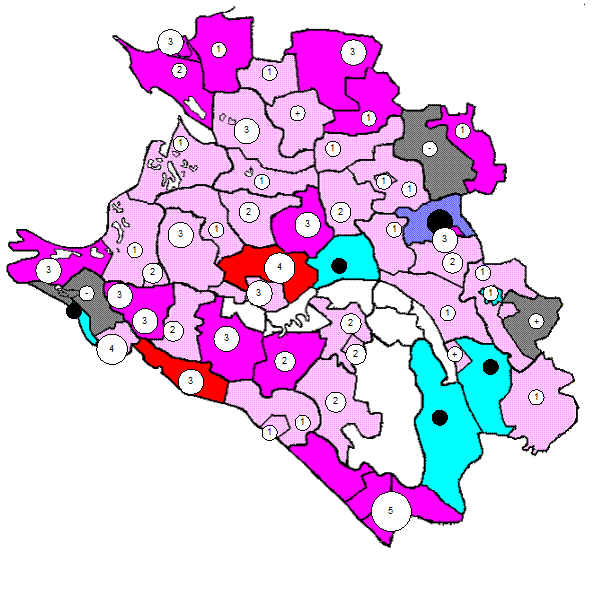TEXT 1. TRADITIONAL SYSTEMS OF CLASSIFICATION
A. Before examining how different systems have been classified, it is necessary to reflect on both -what is being classified, and why such classifications have been undertaken. First, what is 'government', and how do governments differ from 'political systems' or 'regimes'? 'Government' refers to the institutional processes through which collective and usually binding decisions are made. A political system or regime, on the other hand, is a broader term that encompasses not only the mechanisms of government and the institutions of the state, but also the structures and processes through which these interact with the larger society. A political system is, in effect, a subsystem of the larger social system. It is a 'system' in that there are interrelationships within a complex whole, and 'political' in that these interrelationships relate to the distribution of power, wealth and resources in society. A regime is therefore a 'system of rule' that endures despite the fact that governments come and go. Whereas governments can be changed by elections, through dynastic succession, as a result of coup d'etats and so on, regimes can only be changed by military intervention from without or by some kind of revolutionary upheaval from within. B. Why classify political systems? The interest in classifying political systems stems from two sources. First, classification is an essential aid to the understanding of politics and government. The second purpose of classification is to facilitate evaluation rather than analysis. In other words, understanding is closely tied up with normative judgements: questions about Svhat is' are linked to questions about Vhat should be'. All systems of classification have their drawbacks, however. As with all analytical devices, there is a danger of simplification. The classification of regimes under the same heading draws attention to the simUarities that they share, but there is a risk that the differences that divide them will be ignored or disguised. A related problem is a possible failure to see that a phenomenon may have different meanings in different contexts. For instance, in Japan and throughout East Asia, the state' may be different in kind and significance from 'the state' as generally understood in the context of the West classification process. Finally, all systems of classifications have the drawback that they are necessarily state-bound: they treat individual countries as coherent or independent entities in their own right. Although this approach is by no means invalid, it is now widely viewed as incomplete in the light of the phenomenon of globalization. С Since the late 1980s, the regime-classification industry has been in a limbo. Older categories, particularly the three worlds' division, were certainly redundant, but the political contours of the new world were far from clear. The image of a 'world of liberal democracies'
suggested the superiority of a specifically western model of development, based perhaps especially on the USA, and it implied that values such as individualism, rights and choice are universally applicable. One result of this was a failure to recognize the significance, for instance, of Islamic and Confucian1 political forms. However, one of the difficulties of establishing a new system of classification is that there is no consensus about the criteria upon which such a system should be based. No system of classification relies on a single all-important factor. Nevertheless, particular systems have tended to prioritize different sets of criteria. Among the parameters most commonly used are the following: • Who rules? Is political participation confined to an elite body or privileged group, or does it encompass the entire population? • How is compliance achieved? Is government obeyed as a result of the exercise or threat of force or through bargaining and compromise? • Is government power centralized or fragmented? What kinds of check and balance operate in the political system? • How is government power acquired and transferred? Is a regime open and competitive, or is it monolithic? • What is the balance between the state and the individual? What is the distribution of rights and responsibilities between government and citizens? • What is the level of material development?: How materially affluent is the society, and how equally is wealth distributed?
• How is economic life organized? Is the economy geared to the market or to planning, and what economic role does government play? • How stable is a regime? Has the regime survived over time, and does it have the capacity to respond to new demands and challenges? Nevertheless, five regime types can be identified in the modern world: • Western polyarchies • Postcommunist regimes • East Asian regimes • Islamic regimes • Military regimes. i Confucius (551 B.C. - 479 B.C.) - Chinese philosopher, founder of traditional Chinese education.
|




